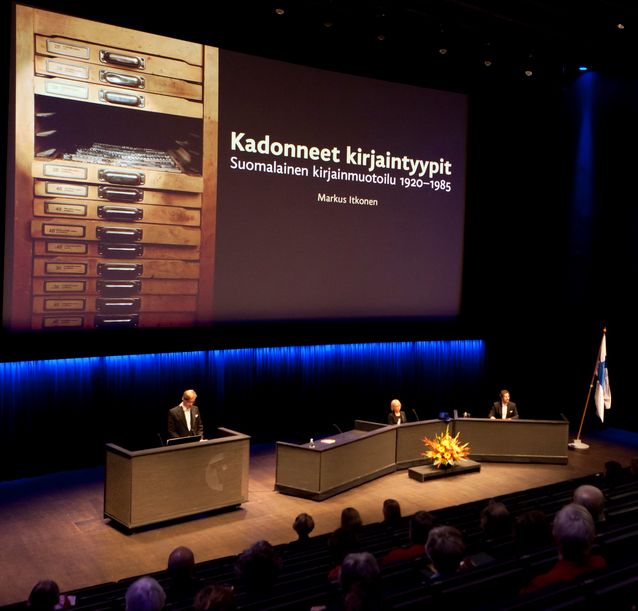Markus Itkonen
Markus Kalevi Itkonen
Born December 17, 1965 Rural Municipality of Helsinki (Vantaa)
Doctor of Arts 2012 (graphic design), Aalto University School of Arts, Design and Architecture
Master of Arts 1991 (art history), University of Helsinki
Graphic designer 1986, Mainosgraafikkojen koulu, Helsinki
Graafinen suunnittelu Markus Itkonen Oy 1987– (owner), core business: book design
Publications:
Kirjaintyypit ja tyyli (‘Type designs and style’). November 2015
Typografian käsikirja (‘Handbook of Typography’) 2003. 4th Ed. 2012
The Unknown Finnish Type Designs 1920–1985. Doctoral dissertation, 2012
Typoteesejä. Tarkan typografian opas. (‘A precise guide to typography’) 1999
Articles from the field of typography and graphic design 1990–
Awards and special achievements
State Award for Public Information (as a member of a working group) 2009
10 honorary diplomas from the Vuoden kirjavaliot (‘Books of the year’) competition (now The Most Beautiful Book of the Year competition)
The Finnish Centre for Easy to Read’s Sesame Prize 2005, for the design of a an easy-to-read art book
Photo: Pertti Salonen
Written by Markus Itkonen (Kaija Hartikainen, ed.)
Translated by Matthew Billington

